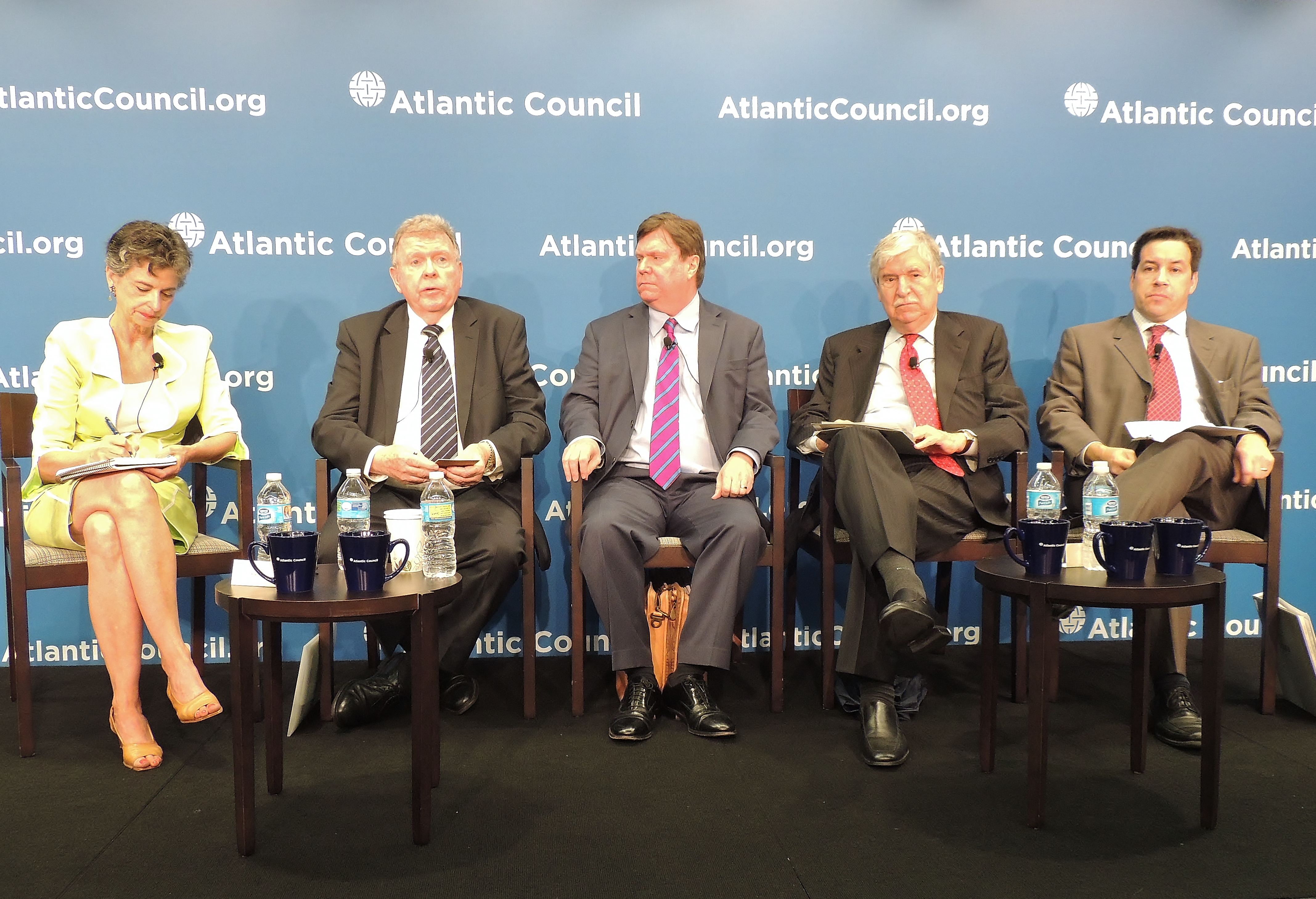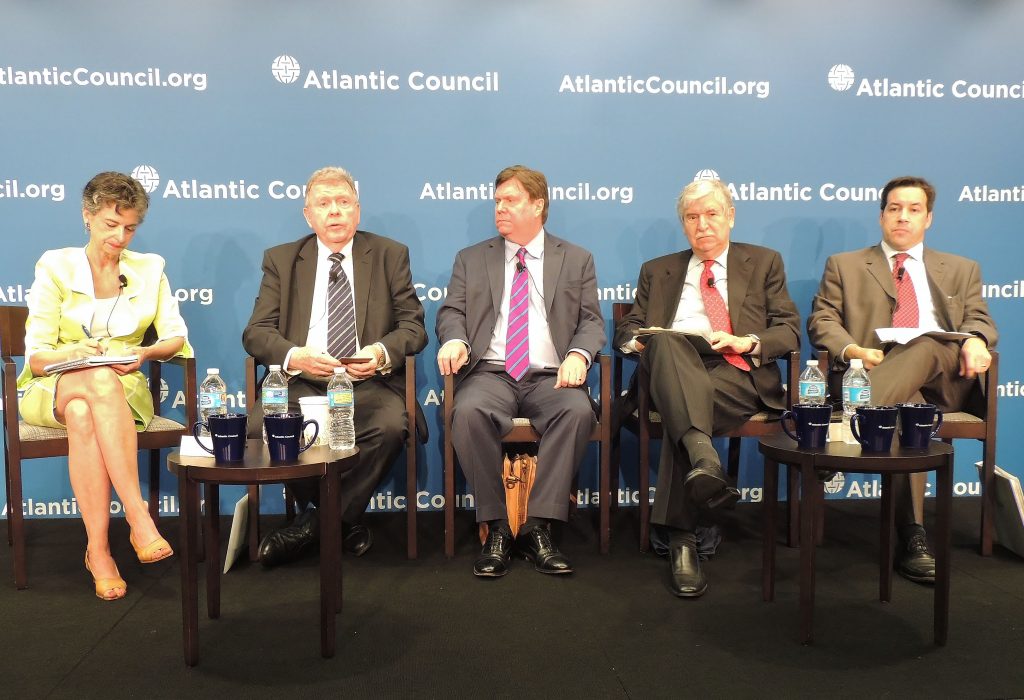 Following a historic nuclear agreement reached between Iran and six world powers on Tuesday, the key issue facing the US Congress—tasked with approving the agreement—is verification. The deal, as administration officials have reiterated, is not based on trust but on permanent, intrusive verification measures to ensure Iran implements all provisions the agreement.
Following a historic nuclear agreement reached between Iran and six world powers on Tuesday, the key issue facing the US Congress—tasked with approving the agreement—is verification. The deal, as administration officials have reiterated, is not based on trust but on permanent, intrusive verification measures to ensure Iran implements all provisions the agreement.
Speaking at an Atlantic Council Iran Task Force event Wednesday, Search for Common Ground’s William Miller, Former Safeguards Official Thomas Shea, and Massachusetts Institute of Technology’s Jim Walsh, and Former Diplomat John Limbert discussed the task ahead for International Atomic Energy Agency (IAEA). National Security Council’s Senior Director for Arms Control and Nonproliferation Jon Wolfsthal also joined the conversation to provide a detailed review on the Deal.
The IAEA has five central challenges to monitor in Iran, stated Miller: to prevent new facilities or construction; to ensure known facilities are not misused, to verify declared nuclear material is accounted for and used for peaceful purposes; to track imports entering the country; and to verify the limitations otherwise stated in the Joint Comprehensive Plan of Action (JCPOA).
“The United States will work the P5+1 to ensure the IAEA has the technology, people, and resources to verify this deal,” assured National Security Council’s Wolfsthal.
“Iran cannot get any closer to a nuclear weapon under this plan without us knowing about it,” Wolfsthal stated. The international community will have full access to eighteen declared facilities, with inspectors allowed to monitor at all times. If suspicious activities arise elsewhere outside of the eighteen declared facilities, a complaint may be lodged and Iran will have 24 four days to address the concerns. If unresolved after 24 days, the IAEA will be permitted access to ensure no violations have occurred. Critics have grasped ahold of the 24 day provision, suggesting that this buffer period will allow Iran to conceal activity. However, the 24 day period only applies to potential new or covert facilities, not existing nuclear sites that will be continuously monitored by inspectors on the ground. Wolfsthal assured that if a new or covert site is discovered and deemed suspicious, Iran will not have the capacity to conceal nuclear-weapon making activity within 24 days, nor without the international community seeing the movement of materials or equipment.
“This is a good deal. It exceed all benchmarks laid in Lausanne,” Wolfsthal stated unequivocally. From all accounts, the administration remains confident in the JCPOA and the IAEA’s ability to ensure implementation.
{soundcloud}https://soundcloud.com/atlanticcouncil/can-the-iaea-effectively-verify-an-agreement-between-iran-and-the-p51{/soundcloud}
A key sticking point during negotiations was the “snapback” mechanism or the ability of the international community to renew sanctions if Iran violates terms of the deal. Under the JCPOA, any one of the six parties involved in negotiations may declare a violation to a dispute resolution panel. If unresolved after thirty days, sanctions “shall apply in the same manner as they applied before.” A UN Security Council vote is not required to snapback sanctions, thus preventing any one of the six world powers from vetoing a resumption of sanctions.
“The US President can snap sanction back into place with the sign of a pen. Russia and China cannot stop a US sanctions snapback,” stated Wolfsthal.
Now, what remains is the congressional and UN approval. A major debate looms in US House and Senate, despite President Obama vow to veto any attempt to block implementation of the JCPOA. The United Nations Resolution will also be a key piece in implementation, as the text will provide official authority for monitoring to the IAEA.
